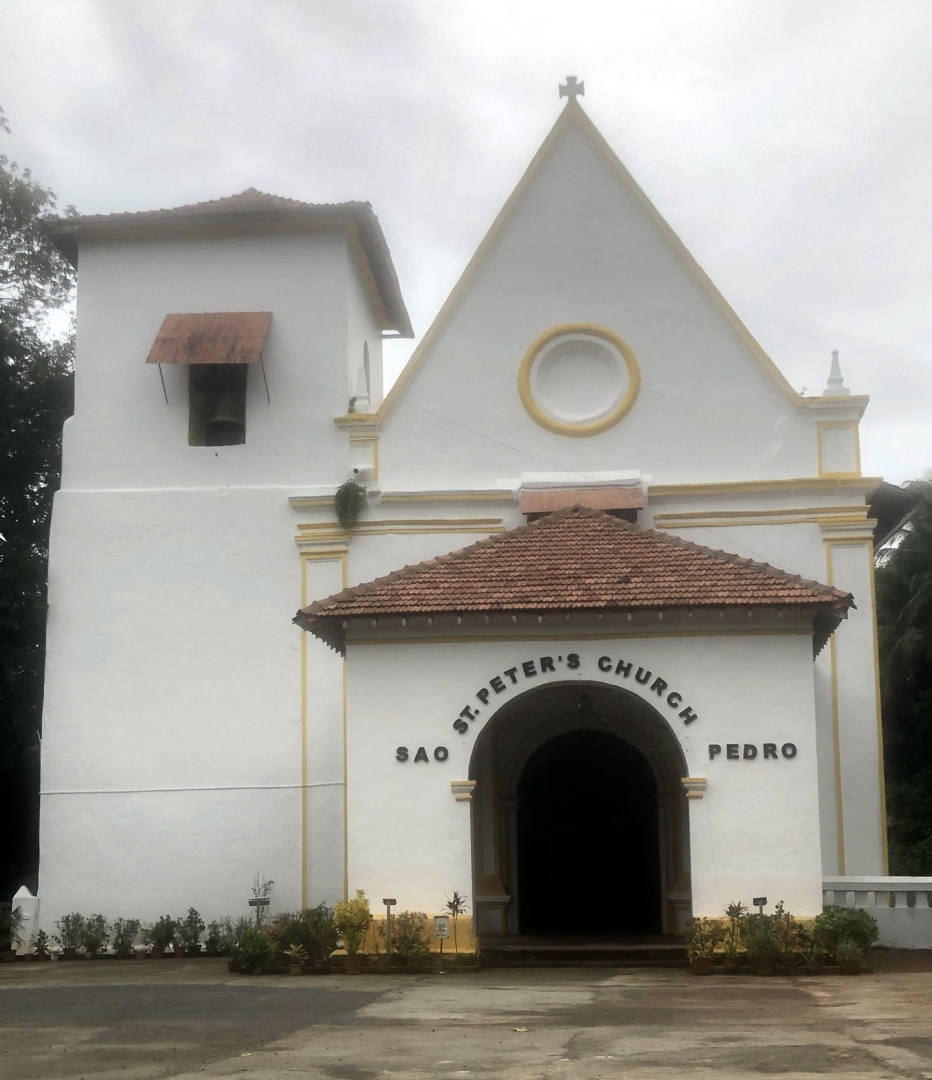
CHRONICLES OF GOAN CHURCHES
Bainguinim and Panelim are two small villages on the border of Old Goa, but today the place is more prominently known as Sao Pedro. The church here is dedicated to St Peter. It has a Catholic population of around 300, who celebrate the feast of the patron on June 29, the feast of Sts. Peter and Paul, or on a Sunday after it.
Origin
The Franciscan missionaries came to Goa in 1517. The St Peter’s Church was established in 1543, by Portuguese architects on the border of Old Goa, to cater to the spiritual needs of the two villages. This fact is ascertained on a board on the right side of the gate of the Church, which reads, estb. 1543. Its cost was borne entirely by the public treasury. Like all other first churches in the past, it was of mud walls, covered with dry coconut branches.
In the course of time, the present laterite structure was constructed, and still later, the walls were plastered with cement. It is one of the eight parish churches of the old city of Goa. The parishioners celebrated its fourth centenary in 1993.
In 1720, the Church had a Catholic population of around 2,000. There were a number of Catholic houses around the church, but we do not find most of them today. In 1775, the Catholic population reduced sharply to 1,794, and then to 860 (1827), 504 (1857), 261 (1878) and 100 (1926). The reason for this decline was the plague in Old Goa, which also affected Bainguinim and Panelim. Those residing on the borders of villages fled to safer places.
Due to this, the church building was totally neglected and the parochial house collapsed. The parish priest had to stay in the sacristy. Much later, Fr Planton Faria, a young priest, began the repairs of the church building and so too the residence.
The present parish priest has renovated the entire church. The interior of the church has been painted, the lighting in the church has been improved, the roof has been protected from rain, and the area from the gate to the Church has been plastered with concrete.
As one enters the church to its left is a room containing the old Baptismal Font, however it is no longer used. There is another one a little ahead on the right side. Each of the two pillars supporting the choir loft has a gold painted round stone and on them are ingrained the tabernacle and angels on both the sides.
On the right side of the church on a wall is a wooden artefact depicting the Nativity scene. There are a few inscriptions on the tombstones in the church but they are almost erased. There is a huge pulpit on the left side of the church.
College
The Dominican Vicar General Frei Francisco de Faria constructed the College of St Thomas in 1596 just behind the church, on the banks of the river Mandovi.
On October 18, 1626, a part of the building, some say the whole structure, along with a few houses in the vicinity got burnt due to lightening that struck a close by godown. The government repaired it a couple of years later and the college began to flourish again. After the suppression of the religious orders in Goa, it was closed and during the course of time, the building began to decay. In 1846, the Portuguese government pulled it down completely.
The statue of St Thomas was taken to the Corlim church, while the two bells were auctioned in 1839 and the Communidade of Ucassaim Church purchased them.
Altars
The Church has five altars, the middle is dedicated to St Peter. In the background of the altar is an old wooden frame encrusted with thin marine shells. Above it is an image of a crown with two keys, below is the image of Jesus in his passion attire, the altar to the right has the photo of Divine Mercy, above is the statue of Jesus; on the left is the statue of Our Lady.
There are two altars down the aisle, one dedicated to St Anthony of Padua, and the other to another saint.
In the Sacristy is the Miraculous Statue of Our Lady of Jaffnapatao, which is taken to the chapel of Our Lady of Piety, not too far from the Church, during the Novena days of the Chapel Feast.
(The writer is Superior at Casa Professa, Basilica of Bom Jesus in Old Goa)